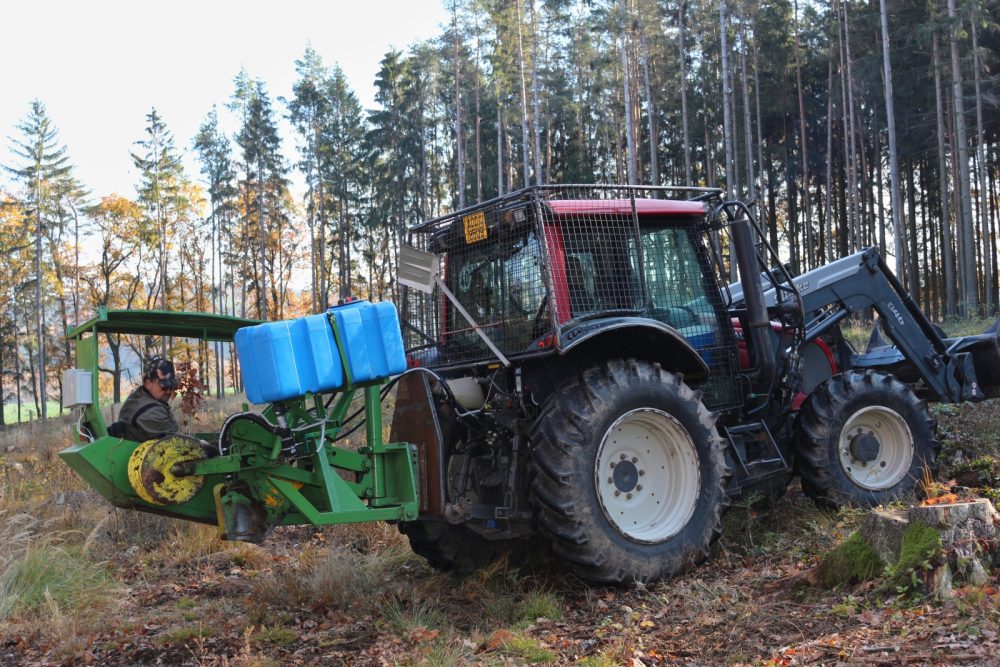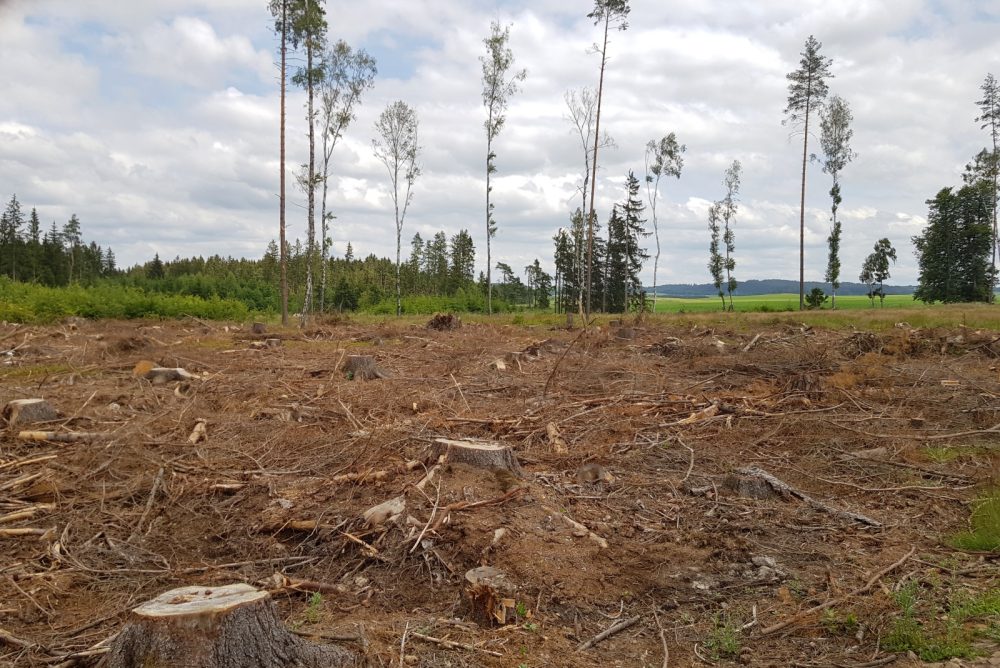We will help the little trees to grow in the new forest
The forest ecosystems of Central Europe are increasingly negatively affected by long periods of drought, as a result of which an unprecedented bark beetle calamity began in recent years. The combination of these factors led to the creation of extensive clearings, which will need to be gradually restored. In extreme climatic conditions, there are considerable losses of freshly planted trees in calamitous clearings. In addition to the careful selection of suitable tree species for these sites, it is absolutely necessary to reduce drought stress and increase the amount of available water for the seedlings.
One of the very promising solutions for increasing the availability of water to plants is the application of soil conditioners – hydrogels. Scientists from the Czech University of Life Sciences, Faculty of Forestry and Wood are engaged in their research on their use in forestry. For practice, they have prepared a certified methodology Hydrogel application and the possibilities of its use in forestry operations with innovative dosing options (Způsoby aplikace hydrogelu a možnosti jeho využití v lesnickém provozu s inovovanými možnostmi dávkování).
 Photo: Planting grooving machine with application of hydrogel, author J. Macků
Photo: Planting grooving machine with application of hydrogel, author J. Macků
In the methodology, there are described in detail the methods of hydrogel application in forestry, using new knowledge gained while solving projects in the last few years. Particular emphasis is given on innovative options for dosing hydrogel directly to seedlings during forest restoration – tablets with hydrogel, with help of adapter for planting grooving machine.
The methods described should lead to more efficient handling of seedlings, savings on material, and also enable the restoration of tree species where it was previously impossible or very inefficient due to insufficient rainfall. The methodology represents an adaptation measure that can be used in forest restoration in the context of ongoing climate changes.
Common hydrogels typically absorb a hundred times their weight, the most advanced super-hydrogels can absorb more than 400 times their weight. They then release water to the plant during a dry day, being able then to quickly absorb new water from the soil. Hydrogels are effective for several years, which is enough time for the seedling to take root on the site. Common hydrogels are able to provide plants with up to 95% of the water they absorb.
Most forest tree species are suitable for hydrogel application, especially species sensitive to drought. As the most promising application of hydrogel is for planting oak, beech, spruce, linden and maple, which show the most pronounced reaction when using hydrogel, especially when exposed to medium to long-term drought stress. Forest scientists do not recommend the use of hydrogel for pine seedlings due to the ambiguity of the results during experiments.
The effect of the added hydrogel on plants is inconspicuous and minimal in sites with sufficient water, as well as during years with high rainfall. In opposite, it supports the growth of trees and their physiological indicators, in periods with a lack of rainfall.
 Photo: Calamitous clearing in the Vysočina Highlands, FGMRI archive
Photo: Calamitous clearing in the Vysočina Highlands, FGMRI archive
The methodology offers innovative adaptation measures that can be used in forest restoration in the context of ongoing climate change. The positive impact of application of hydrogel in the regeneration efforts is most significant in arid regions and on dry, sandy soils. In Central European conditions, positive effect of hydrogel on the growth and vitality of several economic tree species was confirmed, especially in periods of extreme precipitation deficits.
Based on results of experiment, it can be clearly recommended for practical use hydrogel application in the form of a diluted solution under the root or tablets. These methods are operationally the easiest to apply, and at the same time, they make it possible to clearly specify and modify the dose of the additive that is added to the seedling.
The methodology was developed as part of the research project No. QK1910347; „COUNTRY“ (Země), Ministry of Agriculture of the Czech Republic.
The methodology Hydrogel application and the possibilities of its use in forestry operations with innovative dosing options (Způsoby aplikace hydrogelu a možnosti jeho využití v lesnickém provozu s inovovanými možnostmi dávkování) can be downloaded here.
Authors of methodology: Ing. Jan Macků, Ph.D., et al., FLD ČZU, Prague
Prepared by: Ing. Jan Řezáč, VÚLHM, v. v. i. (FGMRI), e-mail: rezac@vulhm.cz
Introductory photo: Planting a pine seedling using a planting grooving machine with hydrogel application. Photo: M. Svatoš
